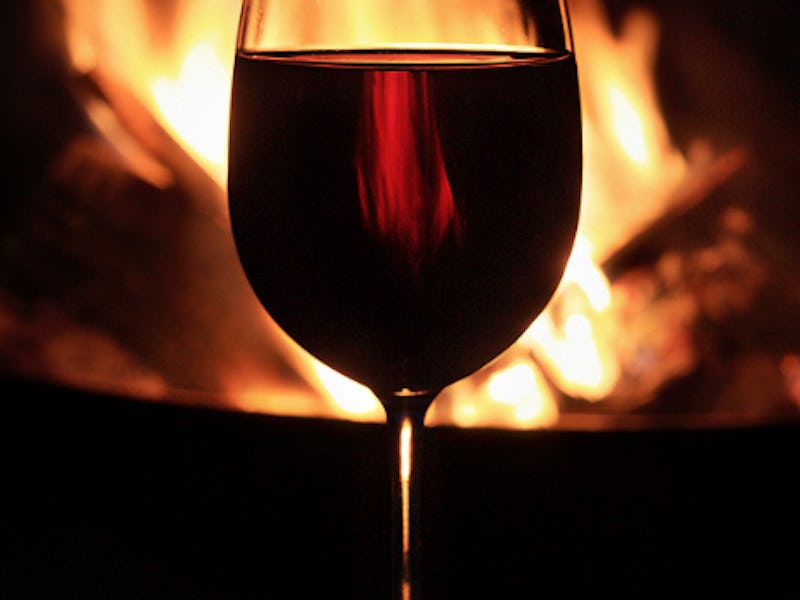Wine’s unique flavors usually evoke wood, fruit, and earth, but this year, we’re going to hear a lot about enjoying bold reds with a subtle undertone of smoke.
That’s because Californian wines are getting flavored with the costliest wildfire in American history, with vineyards in the direct line of danger of not just literal burns but also grapes laced with the not-so-dainty essence of smoke.
Wine develops a smoky flavor and aroma when fire smoke enters a vine’s sap, leaving grapes vulnerable to smoke compounds like guaiacol and 4-methylguaiacol. You’re more likely to taste smoke in red wine versus white wine because the grape’s skins are integrated into red wine during the fermentation process.
Smoke taint became a problem for Californian winemakers in 2008, when a wildfire in Mendocino caused the pinot noirs in the region to develop a distinctively fiery flavor. Since then, winemakers have relied on companies like ETS Labs to analyze and screen grapes that are considered to be at risk. When ETS screens, it uses an analytical tool that measures trace levels of guaiacol and 4-methylguaiacol in grapes that were collected close to the harvest date.
“Smoky wine” might sound like a sexy, mysterious flavor, and in some cases, that can be true — tainted wine descriptions from “bacon” to “wet ashtray,” and the flavor typically lasts much longer than normal wine does after sip. While “wet ashtray” sounds pretty disgusting, Matt Kettmann notes in Wine Enthusiast that some people don’t mind getting turnt with some burnt; some winemakers already use oak barrels while aging the wine to create a similar flavor. For now, there doesn’t seem to be any negative health effects from gurgling up smoky vino.
Experts don’t think that Californian fires have a real chance of negatively changing the wine industry long-term. And hey, if Earth isn’t working out for your royal lushness, may we suggest Mars?
